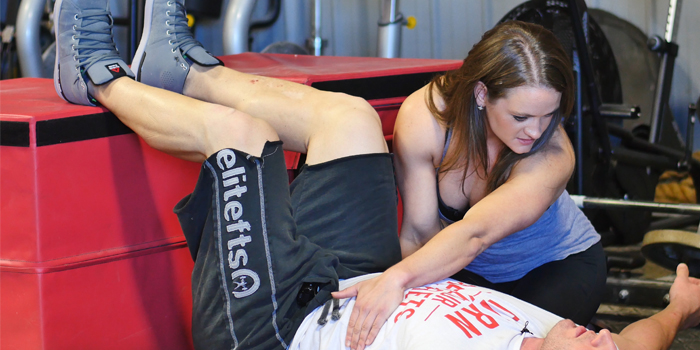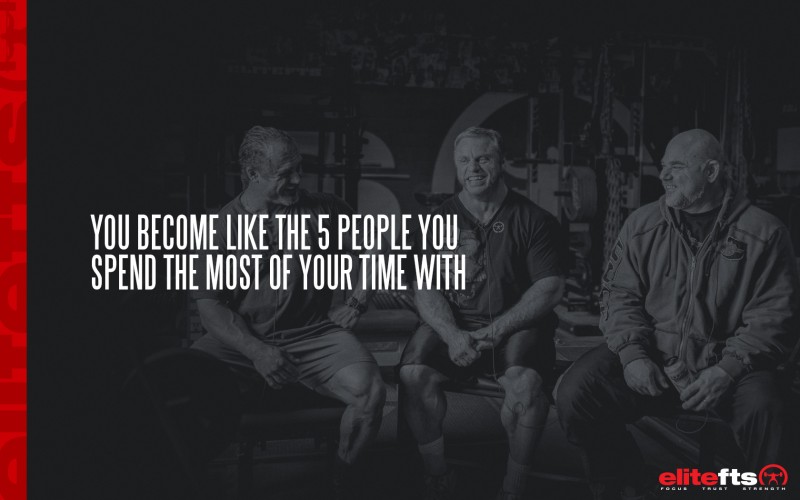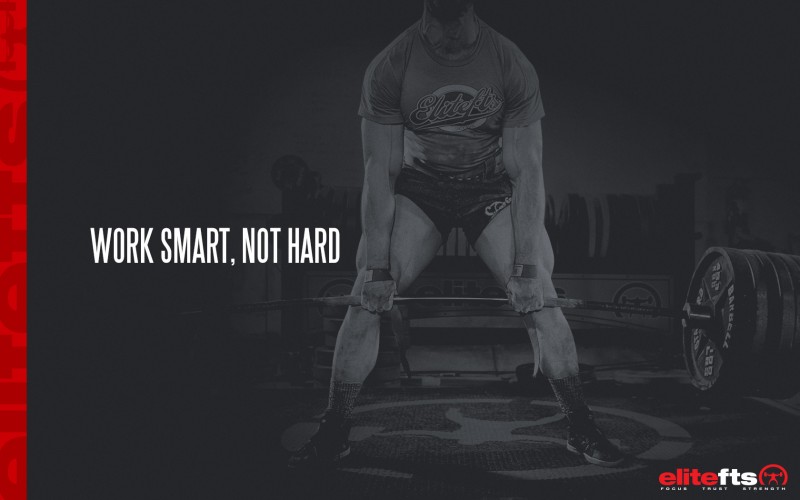
The mechanical sensation of something ripping or tearing away from your body is something we all dread. “Shit. What was that? Get out from underneath the bar, dummy.” You get about 10 minutes (if that) after an acute injury to determine how you think about yourself for the next few months. Point blank, I believe this is one of the most important parts of the healing and rehabilitation process in the case of acute injury. There’s a large body of data coming out that suggests that how we think and what we think about fine-tunes our bodies on an emotional as well as chemical level, which in turn affects the healing process and, moreover, our sanity as we figure out what the next period of time looks like.
I’m prepping for the IPL Tribute meet, and I can’t think of a meet I have been more excited to compete in. I had one of my best squat sessions in months (315 for smooth sets of six) turn totally the opposite direction when I tore the adductor longus tendon off my pelvis, about 1.5 centimeters away from where it should attach. We’ve since determined more imaging may need to be done, and the initial diagnosis may or may not be the full extent of the injury. There's a massive silver lining, though. This is also the first true acute, traumatic tear I’ve had personally. I pride myself on not only having the physical therapy knowledge to help rehab an injury, but for understanding all the other components (psychological, what the tissue “feels” like, all the other stuff a textbook can’t teach you) that come with it. I’m here again, but far different than the other issues I’ve worked through. I’ll take this and run with it, and hopefully produce some content that helps bring some order to what feels like chaos to someone else down the road.
RECENT: Four Simple Mistakes to Avoid to Stay Injury-Free
Here’s the context: I am being overly optimistic for thinking I can be back performing close to or at my best in 17 weeks. I am going to do everything within reason to get there. What I will not compromise is my long-term; I have lots of years lifting, competing, and PRs in me. I won’t sacrifice that for one meet. I preach long-term to lifters, and I believe it. I’ll make that call step by step as we get more information. I’ll be spending the next few articles chronicling the rehab process and finer coaching points, knowing that there is a self-imposed timeline that may or may not align with physiology. If you’re going to be aggressive about getting back healthy for a meet, as a physical therapist and athlete I’ll be a case study of n = 1.
So with an acute injury, the kind where you know something is really wrong, what comes after the obvious advice of “seek medical attention”? Once you’ve started the waiting game and it has sunk in you’re out of training for a while, there are definite ways to set yourself up for success. Most of these points are psychological, because it is the biggest (and likely one of the only) variables we have true control over at this stage in the game. As powerlifters, we’re good at finding new ways to do things. We modify. We substitute one assistance exercise for another. We use a different bar. The one thing we rarely do? Stop. Even when injured, we assume we jump into rehab right away; doing nothing isn’t something we’re good at. When you’re forced to, you get one thing to own, and based on neurophysiology, it will play a huge role in how well you do going forward.
1. Pick your influences.
The first words you tell yourself when this happens are incredibly powerful. I do believe that our thoughts run our lives. "I'm okay" were the first words out of my mouth. The second set of words I heard were, “Hey, you’re going to be okay” from myself and Dave’s friend Bryce Lewis, who happened to be filming for me that day. Bryce is one of the most gifted people at acknowledging struggle but carrying a hope with him. I made a conscious effort to stay engaged with my husband and Bryce as we figured out the next steps.
Some of these things will be predetermined when you pick your training partners, but I think that’s just the point: pick people around you who you know can handle you if shit hits the fan. I got a text from a family member ensuing that my optimism is "my downfall,” whatever that means. I did not talk to that family member for the next two weeks — not out of spite, but because I wanted to control the narrative of what was going on around me. I reached out to quite a few of my team members here at elitefts and my amazing colleagues. If you want to have a fighting shot at maintaining your own sanity and letting things heal on a hormonal level as best you can, be choosy who you surround yourself with at this time. Remove things that have a negative effect — even social media if necessary.
2. Get over it.
What we think about becomes easier and easier to think about, and ultimately becomes what we give some control to. Ever met that guy who tweaked his back, slightly, once, and hasn’t stopped feeling it since? He never stopped thinking about it. Keep your vision forward. There are a few ways you can control this. Reframe as best you can. No one wants to be out of training, but there has to be an upside, somewhere. You need to find your wins and acknowledge them intentionally. Again, our thoughts run our lives very often. The other way is by remembering the long-term and the big picture. There are lots of meets, and ideally, you’d like to have a long training career ahead of you. In the threat of not being able to train as heavy again, maybe you realize that you love to train more than you thought you did. Embrace that with gratitude for the opportunity you will have going forward. Validate and acknowledge it happened, and then move on. You’ve got other ways to move towards your goals.
3. There has to be a plan.
Having a plan promotes the forward-thinking mindset mentioned above, as well as a sense of autonomy and control (e.g. sanity). It brings order to chaos. It doesn’t need to be detailed, and if you’re still waiting for more details there isn’t much you can do. That’s okay. Let that be the plan for the short-term, and think long-term as best you can. Set some tangible goals — things that you can honestly work toward, in the gym and outside. See it as a time to become a “bench specialist” for a short period, or definitively say that you aren’t going to train for a certain amount of time. Having the goal outlined and firm makes it far more palatable, and mentally creates the experience as opportunistic rather than fatalistic, which escalate quickly when uncontrolled. Stress hormones do not help facilitate healing. You choose how you operate.
4. Acknowledge tissue involved.
One of my mentors often tells her patients that there's nothing they can do to speed up the healing process, but there are a lot of ways to slow it down. There’s a cost-benefit ratio to engaging in modified training (e.g. something is better than nothing). Tissue, physiologically, has different healing times based on what’s involved: tendon, ligament, muscle, or bone. There isn’t much you can do to change that. To that end, do not ever compare one person’s injury to another. From a rehab standpoint, your buddy’s issue may involve tissue far different in type or severity from yours, and therefore your plan to get back to training will be different. Please, stop comparing injuries, because they are vastly different and the types of tissue respond vastly differently. This dramatically changes expectations, and expectation management is a powerful tool. This is the number one reason I believe you need to work with a trained medical professional, rather than a “coach” who went to a weekend course for rehab. Histology is a real factor.
5. Be your own advocate.
With doctors, therapists, friends, family, and whomever else, do not be afraid to be honest in what you need, what you’re thinking, and what you’re feeling. Get your own copy of your imaging if you have it done. Get a second or third opinion. Write down your questions for your doctor—all of them—so that you’re prepared when you see him or her. Don’t be afraid to make phone calls and to be a little assertive (just be kind about it). Make your long-term goals clear to whomever you’re working with, right from the start. Goal attainment is ultimately what drives perception of success or failure, so get on the same team. There’s nothing worse than having to remind someone four months down the road that your goal is far different than what they had pictured.
6. Be flexible.
Two words: expectation management. As you get more information (and this will happen daily as you continue to heal), you may find you need to reset your goals. That’s okay. The more you can acknowledge them and change them based on your thoughts and ideas, the more perceived control you have over the situation. I think this gets to the root of injury more than anything. It interrupts our plans and routine. Let yourself bring order to chaos.
Based on the above—again, using myself as a case study—here’s an application.
Influence
I’m lucky enough to have amazing colleagues. I’ve been in contact with them more and with negative influences less. I’ve stopped watching everyone else on social media or taking time to encourage others in the process, depending on the day. This reminds me that my vision has never been about “me,” and helps me live true to that core value. Bryce, as well as some of the team here, are my most recent messages. These are people who “get it” and understand my expectations and goals.
Getting Over It
I am going to decidedly give more of myself to clients online, as well as to clinical growth. I have a list of articles I want to read in this time to get better as a coach and as a clinician. My husband is still training, and as soon as I can hobble around enough to feel comfortable getting to our Globo Gym, I will be in his corner as much as possible. Injury is no excuse for being an unsupportive partner.
The Plan
My plan is no training for at least two weeks, possibly three. I could go in and do some bench work, some upper body machines, and some other safe work, but coming into this injury, I had trained through a wrist fracture that still gives me a few issues, my stress level was high, daily demands were high, fatigue was high, and recovery was poor. My best shot at coming back healthy is letting my body fully recover. It is harder for me to sit home and relax than it is to train, so this has been the hardest part for me.
Being My Own Advocate
After speaking to more experienced colleagues, I wanted to get a second opinion based on the level of competition I expect to return to long-term. I need to know what the reality is short-term so that I can adjust my expectations appropriately. Adjusting my expectations lets me determine my goals and have vision directed forward. It gives me a sense of choice and control, reducing the overall stress and “chaotic” feeling that can come with injury.
Flexibility
Being flexible in both short-term and long-term goals, I am convinced, is what has kept me sane. Knowing that if this is surgical I will likely look for a meet later in the year still gives me a positive destination and frames the picture as seeking a win.
So much of this may seem basic, but when you’re in the throes of acute injury and can’t even start your rehab yet, what you can’t do feels more evident than what you do have control over. It is critical for an athlete to sense some sort of locus of control and self-efficacy. As a physical therapist, I cannot emphasize enough that often, our body’s response to injury does become relatively self-fulfilling. Whether you’re a coach, athlete, or training partner, knowing what’s next after the “oh shit” moment can change how an athlete thinks going forward. These are simple, but appreciably some of the most important things an athlete can do after a traumatic injury. Rehab starts soon, but not yet.












